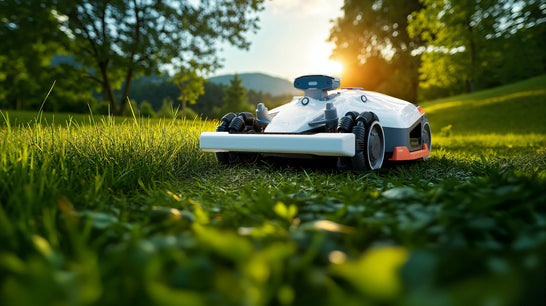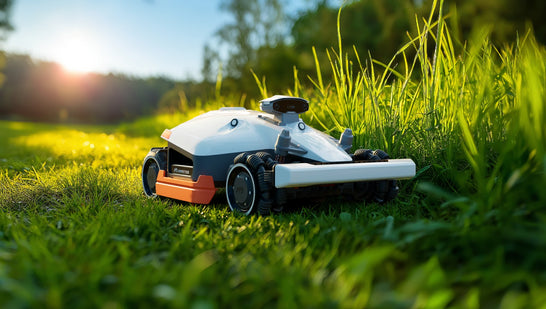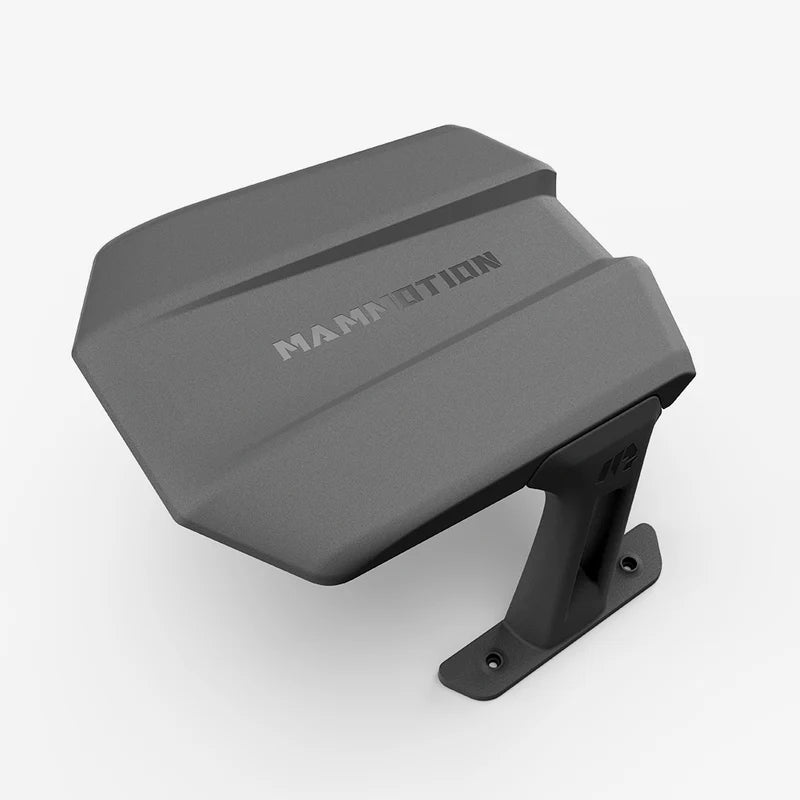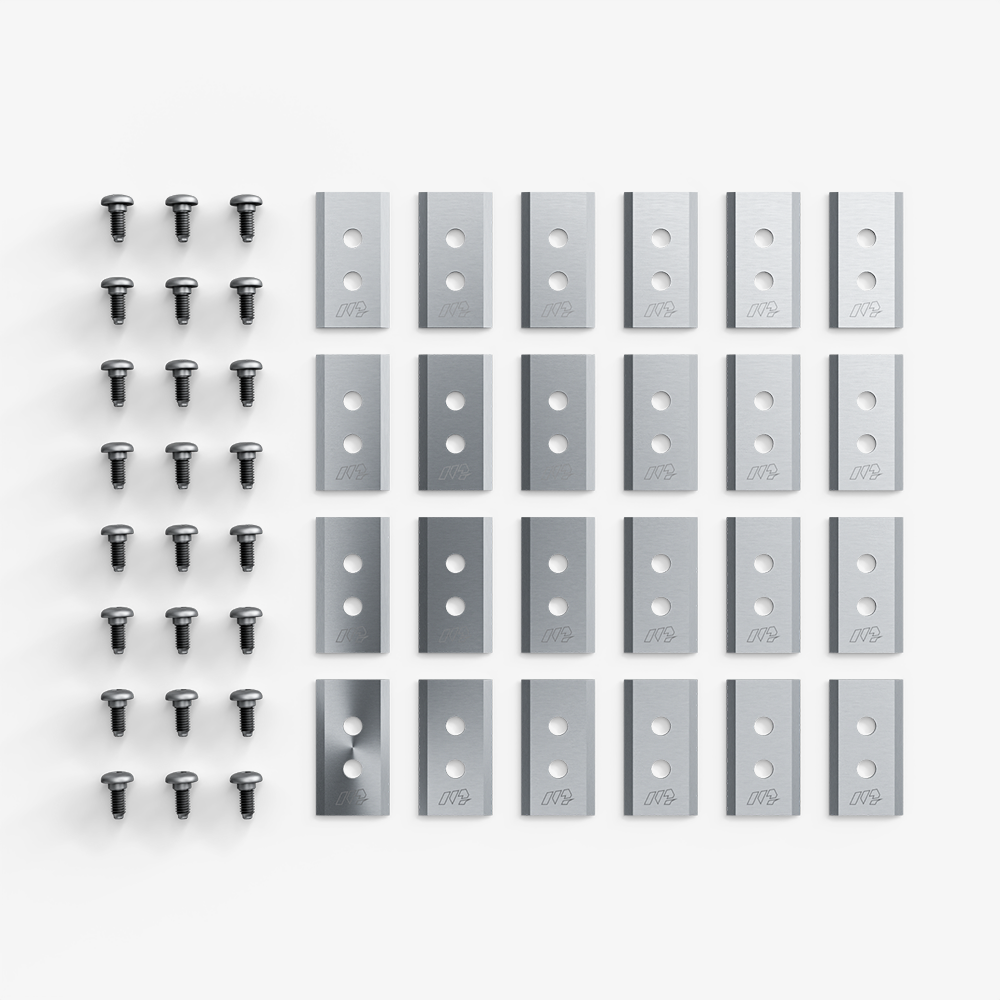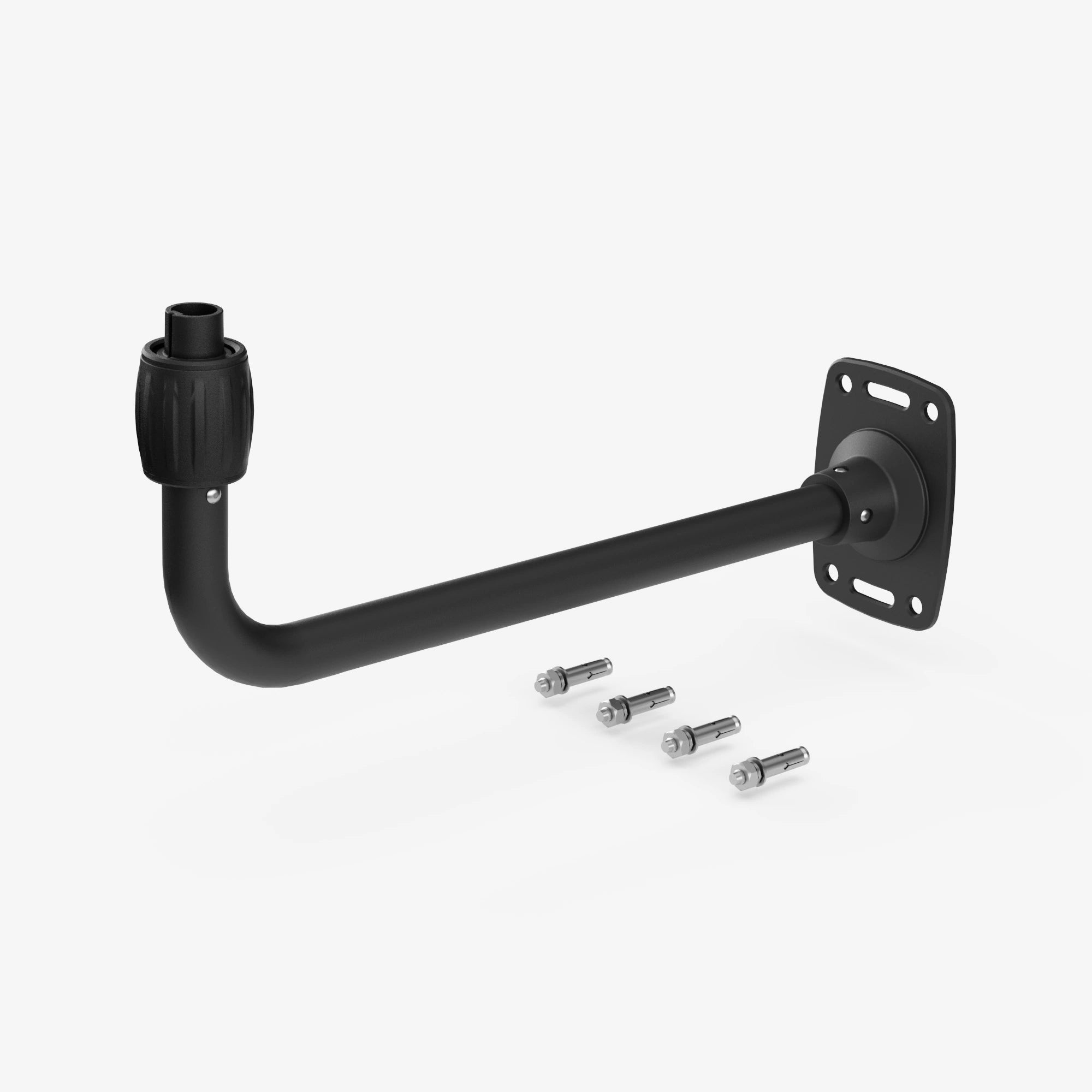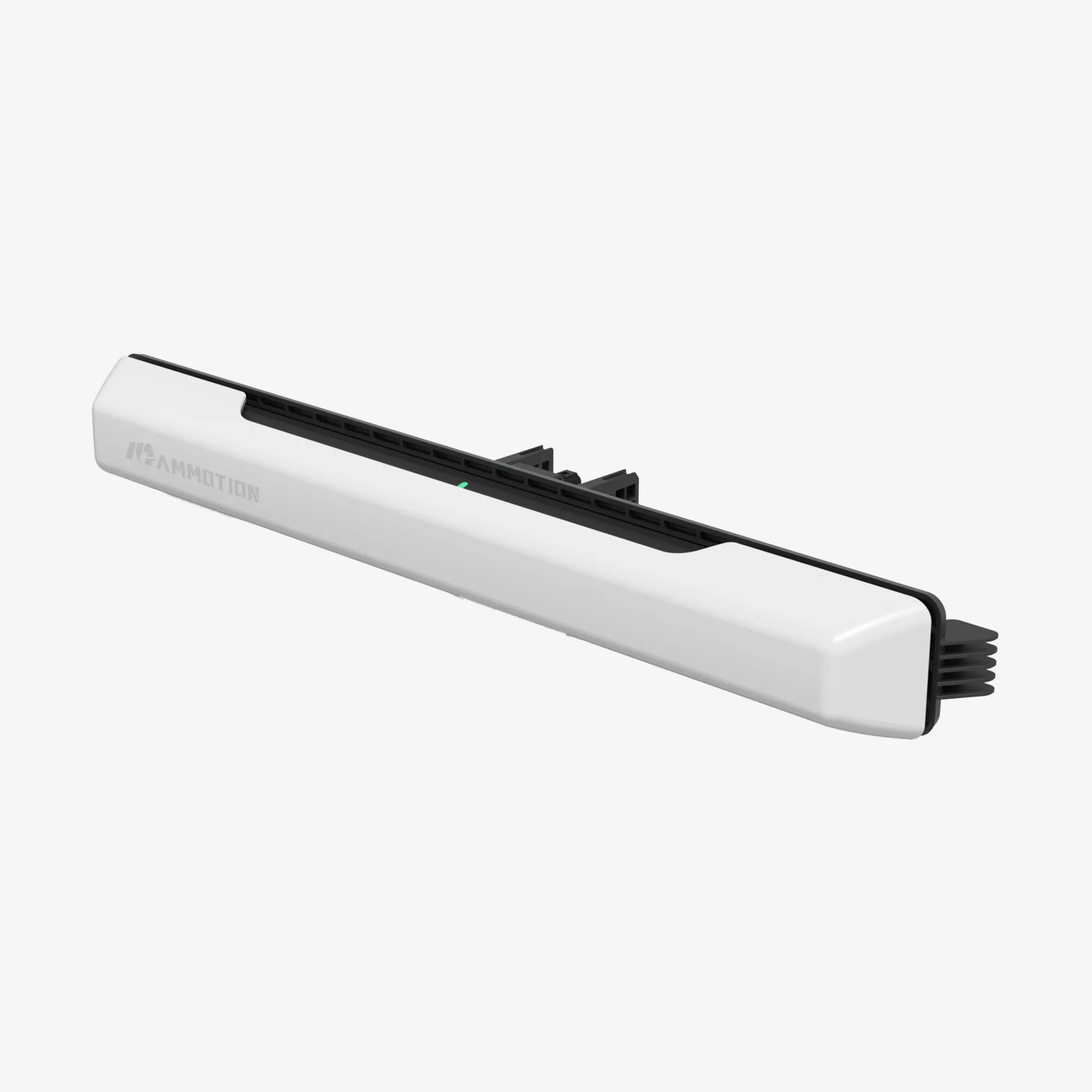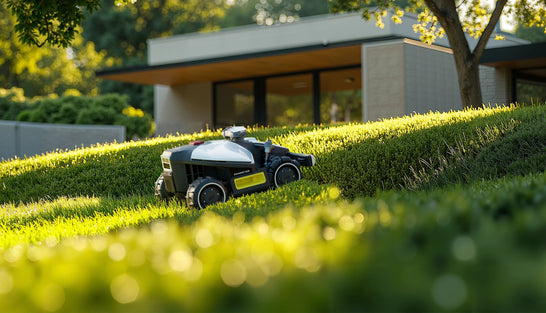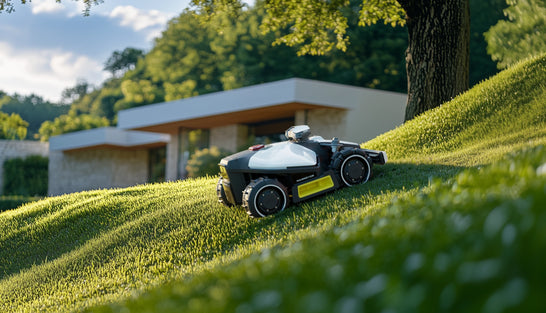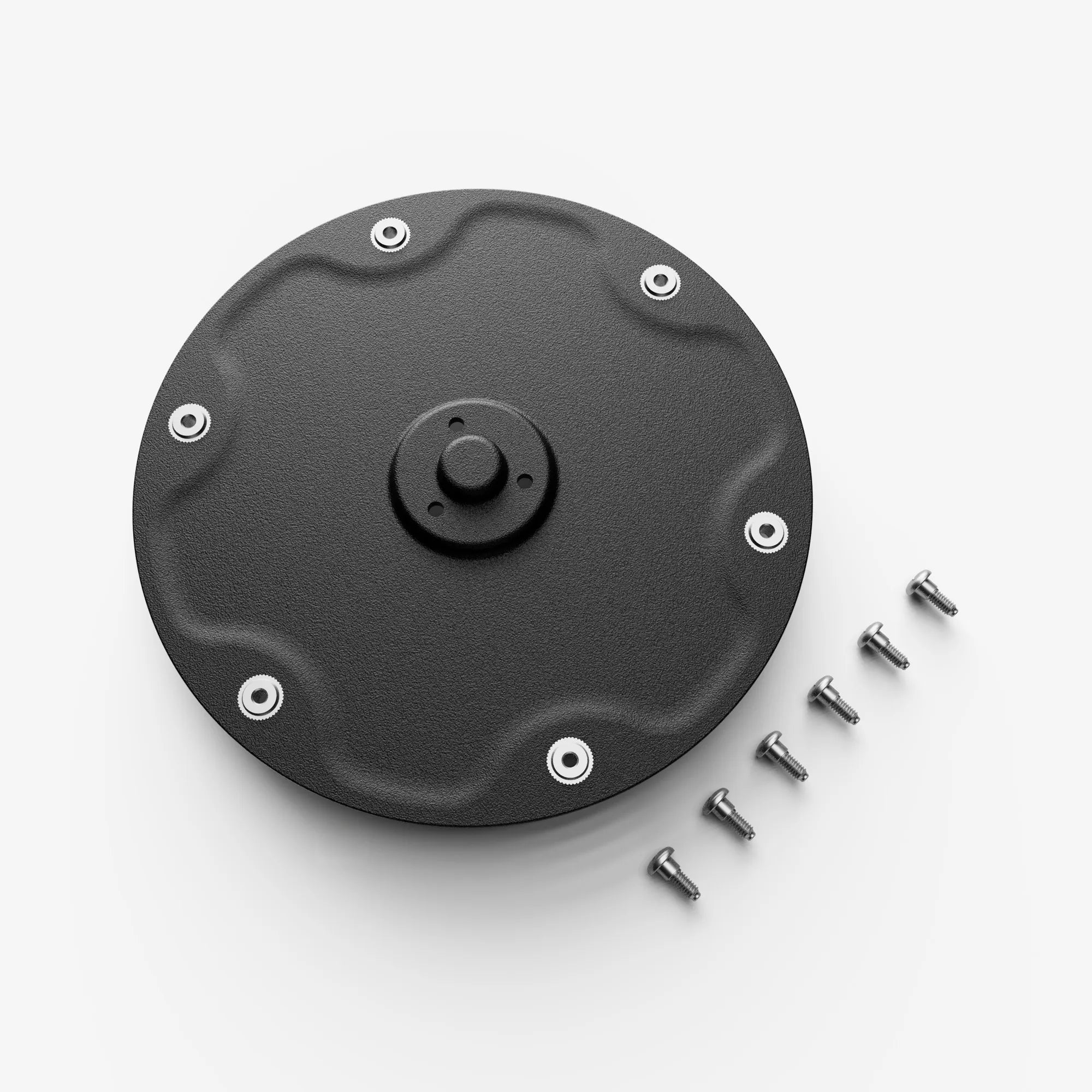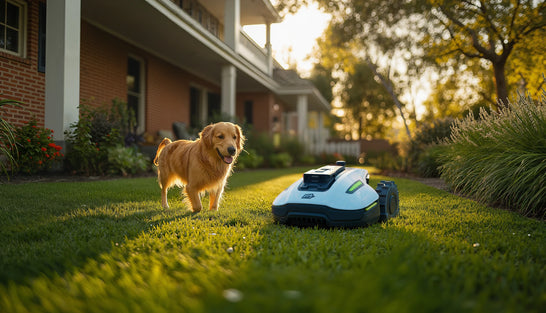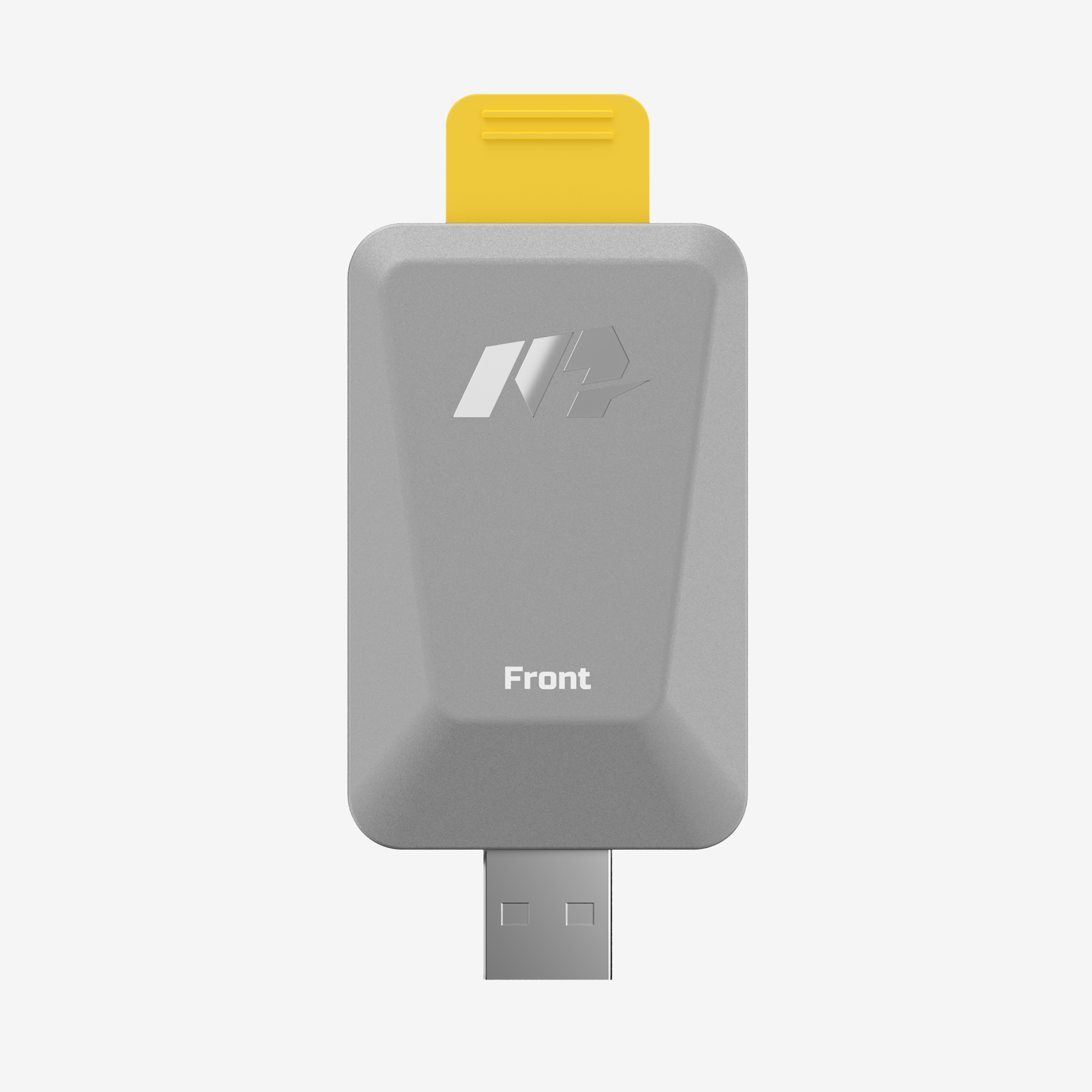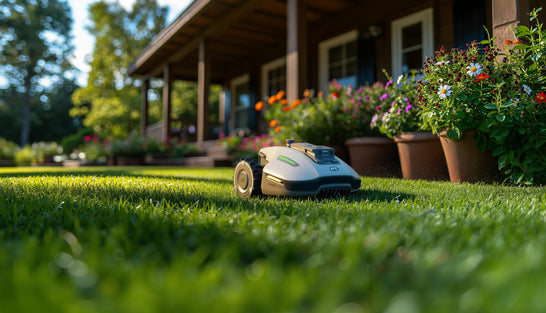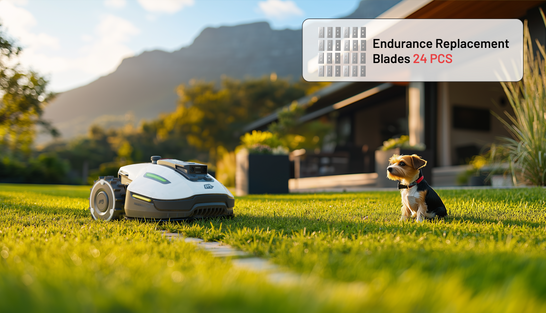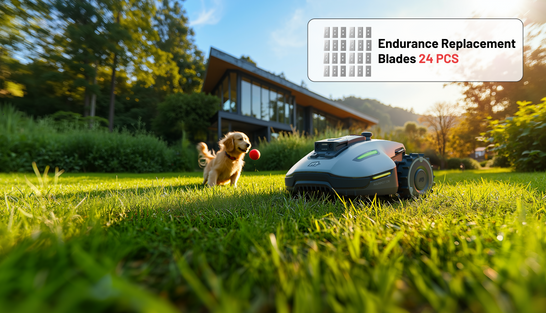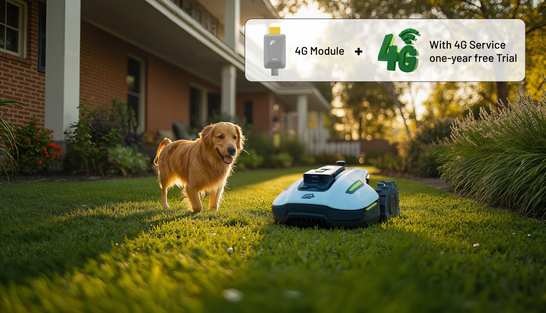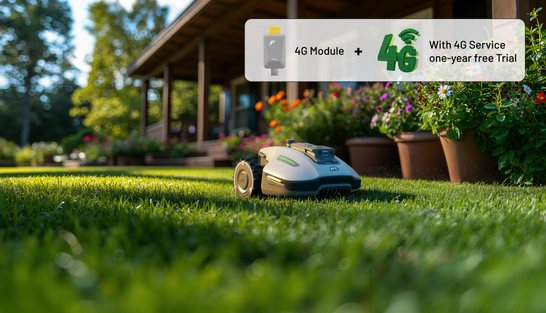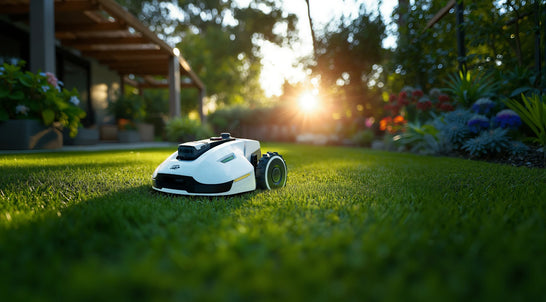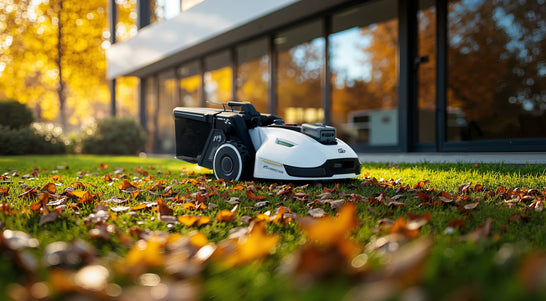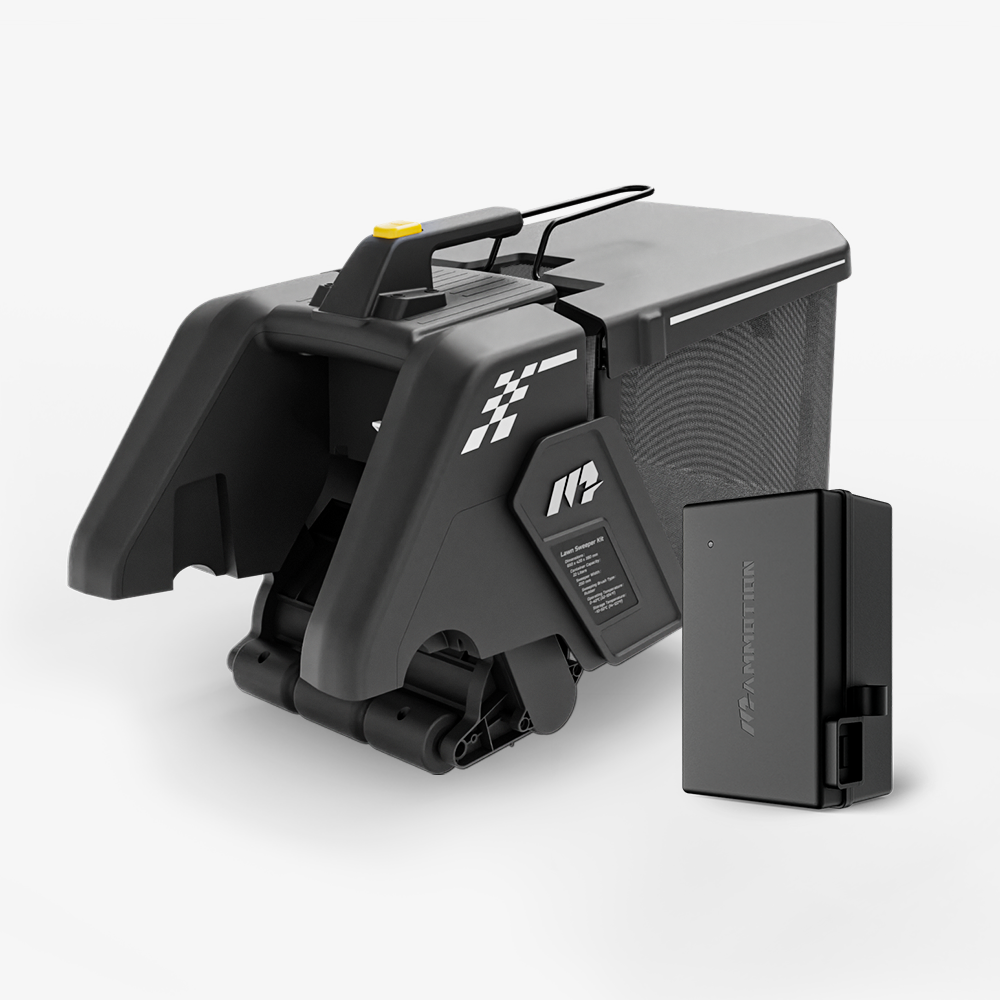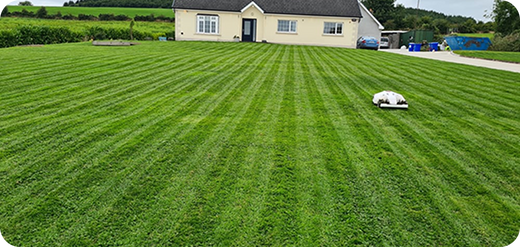Lawn care often feels like a necessary chore for homeowners striving to maintain a pristine property. While a well-manicured lawn is the pride of any homeowner, achieving that polished look demands significant time and effort.
Robotic lawn mowers are changing the game. These advanced, automated machines take over the repetitive task of mowing, offering convenience and precision without requiring constant supervision. But are they the best fit for every yard and budget?
Drawing from hands-on experience and thorough product testing, I’ll guide you through the advantages and limitations of robotic mowers. By the end of this article, you’ll know whether these modern marvels are a smart addition to your lawn care arsenal.
Pros of Robotic Lawn Mowers: Unmatched Convenience and Performance
Robotic lawn mowers don’t just make lawn care easier—they transform it. Here are the key advantages of robot lawn mowers that make them a smart choice for modern homeowners:
1. Ultimate Convenience and Time Efficiency
Robotic mowers operate autonomously, saving you hours of manual labor. With programmable schedules controlled via an app, these mowers keep your lawn perfectly trimmed even when you’re away or too busy to handle yard work.
Operating quietly, they can mow during early mornings or late evenings without disturbing anyone. For those with packed schedules or mobility challenges, robotic mowers offer seamless, hands-free lawn care.
2. Eco-Friendly and Sustainable Operation
Battery-powered robotic mowers produce zero emissions, making them an eco-conscious choice for homeowners looking to reduce their environmental impact. Their quiet operation not only minimizes noise pollution but also ensures a greener alternative to gas-powered mowers.
3. Unmatched Precision and Consistency
Equipped with cutting-edge technologies like RTK GPS and boundary mapping, robotic mowers provide precise, even coverage without overcutting. Premium models such as the Mammotion LUBA 2 include multi-zone management and customizable no-go zones, enabling tailored lawn care.
Want a lawn with professional-quality stripes or patterns? Robotic mowers deliver consistent results, turning your yard into a polished masterpiece.
4. Safety at the Forefront
Designed with advanced safety mechanisms, robotic mowers stop their blades immediately if lifted, tilted, or bumped. These features make them safe to use around pets, children, and yard obstacles.
High-end models also incorporate obstacle detection systems using cameras and sensors, ensuring they avoid collisions with objects like garden furniture or toys.

5. Cost-Effective in the Long Run
While the initial investment may seem steep, robotic mowers offer long-term savings. They use less electricity than traditional mowers consume in fuel and are gentler on the lawn, reducing damage over time. Additionally, you’ll save on professional lawn care services, making them a worthwhile financial investment.
Cons of Robotic Lawn Mowers: Weighing the Limitations
Despite their impressive advantages, robotic lawn mowers are not a perfect fit for every homeowner. Here’s a breakdown of the most notable drawbacks:
1. High Initial Investment
The upfront cost of robotic mowers is significantly higher than that of traditional push or riding mowers. Entry-level models start around $800, while advanced options like the Mammotion LUBA 2 can exceed $2,000. This steep price tag may deter budget-conscious homeowners.
2. Maintenance and Software Challenges
Although generally low-maintenance compared to gas-powered mowers, robotic mowers still require regular upkeep. Grass clippings and debris can build up around the blades and wheels, affecting performance. Additionally, software updates or troubleshooting connectivity issues with companion apps may occasionally cause frustration.
3. Constraints on Lawn Size and Terrain
Robotic mowers are typically designed for specific lawn sizes and conditions. Most models effectively manage up to 2.5 acres, but properties larger than this may exceed their capacity. Similarly, steep slopes, uneven terrain, or dense landscaping can challenge their navigation systems, reducing efficiency.
4. Theft Vulnerability
Due to their compact size and portability, robotic mowers can be a target for theft. While many models feature anti-theft measures like GPS tracking and PIN protection, determined thieves may still pose a risk.
5. Ineffectiveness of Overgrown Grass
While excellent at maintaining lawns, robotic mowers struggle with overgrown or neglected grass. Their smaller blades and limited power make it challenging to cut tall or thick grass in a single pass, often requiring supplemental mowing.
Minimizing the Drawbacks
While these disadvantages may seem significant, many can be mitigated with careful consideration. For instance:
Budget-Friendly Options: Look for entry-level models with essential features if cost is a concern.
Robust Terrain Capabilities: Choose models with all-wheel drive and advanced obstacle avoidance systems to handle challenging landscapes.
Enhanced Security: Opt for devices with strong anti-theft features like GPS tracking and alarms.
With the right choices, many of these challenges can be managed, allowing robotic mowers to remain a viable and efficient option for most homeowners.
Robot Lawn Mowers vs. Traditional Lawn Mowers: A Detailed Comparison
Robotic lawn mowers have quickly carved a niche in the world of lawn care, offering automation and precision. However, many homeowners still find themselves weighing their benefits against traditional lawn mowers to make the best choice for their needs.
Advantages of Robotic Mowers Over Traditional Mowers
1. Convenience and Automation
Robotic mowers are designed to handle lawn care autonomously, saving homeowners hours of manual labor. Once set up, these machines follow pre-programmed schedules, consistently mowing without supervision. In contrast, traditional mowers demand time and physical effort, whether you’re pushing or riding the machine.
2. Precision and Lawn Health
Robotic mowers cut grass frequently in small increments, promoting healthier growth and resulting in a manicured, carpet-like finish. Traditional mowers, especially gas-powered models, tend to remove larger chunks of grass in one pass, which can stress the lawn and lead to uneven results.
3. Eco-Friendliness
Powered by batteries, robotic mowers produce zero emissions and operate almost silently, making them environmentally friendly and ideal for neighborhoods with noise restrictions. Traditional gas mowers, on the other hand, are not only noisy but also emit pollutants, though some electric models provide a quieter alternative.
Advantages of Traditional Mowers Over Robotic Mowers
1. Cost Efficiency
Traditional mowers are significantly more affordable upfront, with manual or push models being particularly budget-friendly. Even premium riding mowers often cost less than advanced robotic models equipped with GPS and boundary-free systems.
2. Flexibility and Power
Traditional mowers excel in handling diverse terrains and challenging grass conditions, including thick, overgrown areas that robotic mowers may struggle to manage. For neglected lawns or uneven landscapes, traditional mowers remain the go-to choice.
3. Simplicity of Use and Maintenance
While robotic mowers depend on software and connectivity, which can occasionally malfunction or require updates, traditional mowers rely on straightforward mechanical systems. These systems are easier to troubleshoot and maintain using basic tools, making them a reliable option for those who prefer minimal technical involvement.
Feature Comparison: Robotic vs. Traditional Lawn Mowers
|
Feature |
Robotic Lawn Mowers |
Traditional Lawn Mowers |
|
Convenience and Automation |
Fully automated; works on pre-programmed schedules, saving time and effort. |
Requires manual operation; time-intensive and labor-demanding. |
|
Lawn Health and Precision |
Trims grass frequently in small increments, promoting healthier and more even lawns. |
Cuts larger portions at once, which can stress the lawn and create uneven patches. |
|
Eco-Friendliness |
Battery-powered, producing zero emissions and operating quietly. |
Gas-powered models emit pollutants and are noisy; some electric options available. |
|
Cost Efficiency |
Higher upfront costs for advanced features like GPS and boundary-free systems. |
More affordable upfront, especially push or manual models. |
|
Terrain and Grass Handling |
Best for maintained, even lawns; struggles with thick, overgrown, or uneven terrain. |
Handles diverse terrains and conditions, including thick and overgrown grass. |
|
Maintenance and Simplicity |
Relies on software and connectivity; requires updates and may encounter technical malfunctions. |
Mechanical systems are easier to repair and maintain with basic tools. |
Which Is Right for You?
Deciding between a robotic and traditional mower ultimately depends on your specific lawn care requirements and priorities. Below are tailored scenarios to help you choose the right option for your yard.
Choose a Robotic Mower If:
- You value automation and convenience.
Robotic mowers are ideal for homeowners who want to minimize manual effort and enjoy the convenience of scheduled, hands-free lawn care.
- You have a smaller to medium-sized lawn with simple terrain.
These mowers perform best on lawns with minimal obstacles, flat or gently sloping areas, and no extreme landscaping challenges.
- You prioritize an eco-friendly, quiet solution.
For those conscious of their carbon footprint or noise pollution, robotic mowers are a sustainable, low-noise option.
Choose a Traditional Mower If:
- You’re on a tight budget or maintain a large, uneven yard.
Traditional mowers are more affordable upfront and are better suited for larger properties or terrains with slopes, obstacles, or rough patches.
- You occasionally let grass grow tall or face challenging conditions.
Traditional mowers excel in cutting overgrown or thick grass, where robotic mowers might struggle to deliver consistent performance.
- You prefer a reliable, straightforward solution.
For those who value simplicity and want to avoid the complexities of software or app-based maintenance, traditional mowers are an excellent choice.
Final Thoughts
For busy homeowners or those seeking convenience, robotic mowers offer a hands-off, eco-friendly way to maintain a lawn. Their ability to work autonomously while reducing emissions is particularly appealing for medium-sized properties with uncomplicated layouts. However, traditional mowers remain the go-to option for those with larger, more challenging yards or tighter budgets.
Frequently Asked Questions
1. Are robotic lawn mowers worth the investment?
Yes, robotic lawn mowers are worth the investment for homeowners who value convenience, time savings, and eco-friendliness. Although they come with a higher upfront cost, they reduce long-term expenses like fuel, maintenance, and professional lawn care services.
2. Can a robotic mower handle uneven or sloped terrain?
It depends on the model. Basic robotic mowers perform best on flat or gently sloping lawns, while advanced models with all-wheel drive and obstacle avoidance, like Mammotion LUBA 2 AWD, can handle more complex or uneven terrain.
3. Do robotic mowers work without boundary wires?
Some newer models, such as the Mammotion robot lawn mowers, use GPS or RTK navigation and can operate without boundary wires. However, many traditional models still require perimeter wire installation to define mowing zones.
4. How safe are robotic lawn mowers around pets and kids?
Robotic mowers are designed with multiple safety features, including automatic blade stoppage when lifted or tilted. High-end models also have sensors to detect and avoid pets, children, and obstacles.
5. How much maintenance does a robotic lawn mower require?
Maintenance is minimal but necessary. You’ll need to clean the blades and wheels regularly, check for software updates, and inspect the battery and cutting system for wear.
6. Can robotic mowers cut tall or overgrown grass?
Robotic mowers are best at maintaining already-trimmed lawns. They may struggle with tall or thick grass and might require a traditional mower to handle the initial cut.
7. Are robotic lawn mowers secure from theft?
Most models include anti-theft features like PIN code protection, GPS tracking, and alarms. However, due to their portability, they can still be a target if left unsecured in accessible areas.
8. What’s the average lifespan of a robotic lawn mower?
With proper care, a quality robotic mower can last 5–10 years. Battery life may degrade over time and usually needs replacement after 2–4 years, depending on usage.
9. Can I control a robotic mower with my phone?
Yes, most robotic mowers come with companion smartphone apps that allow you to schedule mowing times, adjust settings, monitor progress, and receive alerts.
10. What size lawn is best suited for a robotic mower?
Robotic mowers are ideal for small to medium-sized lawns (up to 2.5 acres for premium models). Larger properties may require multiple units or a hybrid approach using traditional mowers.

